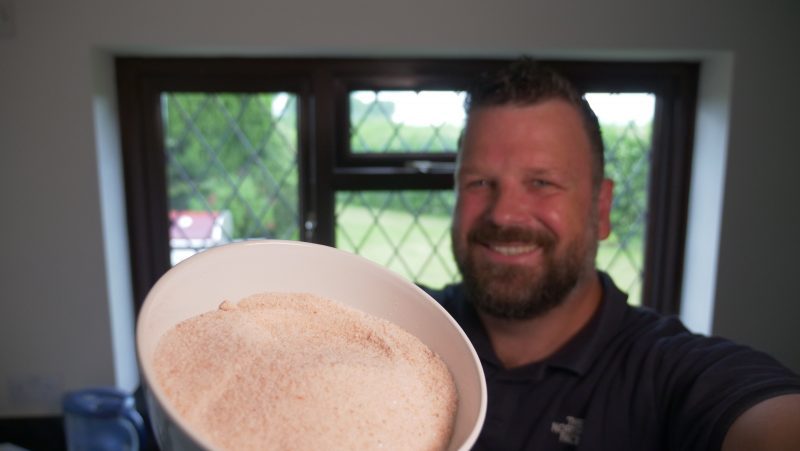Some of the links below are affiliate links, meaning that I will earn a commission if you click and make a purchase. This is at no extra cost to yourself.
When fermenting, salt is hugely important. Not only does it help preserve flavour and vitamin content, but it keeps away unwanted bacteria, resulting in a healthy fermentation.
Two Common Questions About Salt
Two questions commonly arise when talking about salt in fermentations. What type of salt, and how much.
What Type of Salt Should I Use for a Fermentation?
Firstly lets talk about the type of salt. You would have heard me mention during my videos to use salt that has no additives, and also salt that is not iodised. While I still prefer to use salt like sea salt or Himalayan rock salt, research shows that iodised salt will not actually affect the success of your fermentation.
The use of iodized salt did not statistically significantly influence microbial populations in the fermentation. Thus, there is no basis for the popular held belief that the use of iodized salt inhibits the growth of the bacteria important for the sauerkraut fermentation.
https://www.sciencedirect.com/science/article/abs/pii/S0740002018300121
I would still steer away from salt that has additives like anti-caking agents.
How Much Salt Should I Use for a Fermentation?
Secondly, the amount of salt to use. Salt in fermentations is usually expressed as a percentage. For a brine fermentation, this is a percentage of the weight of the water only. So 3% salt would be 30g salt with 1000g water (1000ml). With a mash fermentation, you measure the weight of the ingredients and use the appropriate amount of salt. So 30g salt for 1000g or 1kg of chillies.
There are two things to consider when adding salt. How salty the end product will be, you can always add salt, but you can’t take it away! And the amount of salt that allows the lactobacillus to thrive but also inhibits harmful bacteria.
My recommendation is to go with between 2 and 3% once you are comfortable with making fermentations. If you are just starting out and want to be a little more cautious, you can use up to 5 or even 6%.
Lactobacillus can tolerate salt levels up to about 8 to 10%. However after 6% the lactobacillus activity is markedly reduced.
Four Lactobacillus species were studied for their ability to grow at high NaCl concentrations and different initial pH values. Among these strains, Lactobacillus plantarum strains 541 and A6 indicated to be the most salt tolerant. Both strains were able to ferment glucose up to 8% salt and produce lactic acid even at 10% salt
https://core.ac.uk/download/pdf/36062836.pdf


